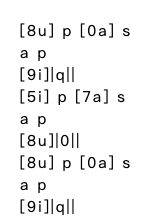Roblox Sheet

Roblox Sheet
Mia And Sebastian's Theme
Justin Hurwitz
Experience Mia And Sebastian's Theme by Justin Hurwitz in a whole new way! Use your keyboard to play Mia And Sebastian's Theme Roblox Piano Sheets on the Virtual Keyboard Piano. Whether you're a Roblox piano game player or want to practice classic pieces, this Mia And Sebastian's Theme Roblox Piano Sheet is perfect for you, making it easy to progress from beginner to expert. Mia And Sebastian's Theme is featured in the TOP 100 Roblox Piano Sheets, along with many other easy, classical , pop, Christmas songs, and Disney collections for you to playing!
291 views
Roblox Sheet

Roblox Sheet
Mia and Sebastian's Theme
Justin Hurwitz
Experience Mia and Sebastian's Theme by Justin Hurwitz in a whole new way! Use your keyboard to play Mia and Sebastian's Theme Roblox Piano Sheets on the Virtual Keyboard Piano. Whether you're a Roblox piano game player or want to practice classic pieces, this Mia and Sebastian's Theme Roblox Piano Sheet is perfect for you, making it easy to progress from beginner to expert. Mia and Sebastian's Theme is featured in the TOP 100 Roblox Piano Sheets, along with many other easy, classical , pop, Christmas songs, and Disney collections for you to playing!
26 views
Roblox Sheet

Roblox Sheet
Mia and Sebastian's Theme
Experience Mia and Sebastian's Theme by undefined in a whole new way! Use your keyboard to play Mia and Sebastian's Theme Roblox Piano Sheets on the Virtual Keyboard Piano. Whether you're a Roblox piano game player or want to practice classic pieces, this Mia and Sebastian's Theme Roblox Piano Sheet is perfect for you, making it easy to progress from beginner to expert. Mia and Sebastian's Theme is featured in the TOP 100 Roblox Piano Sheets, along with many other easy, classical , pop, Christmas songs, and Disney collections for you to playing!
14 views



















